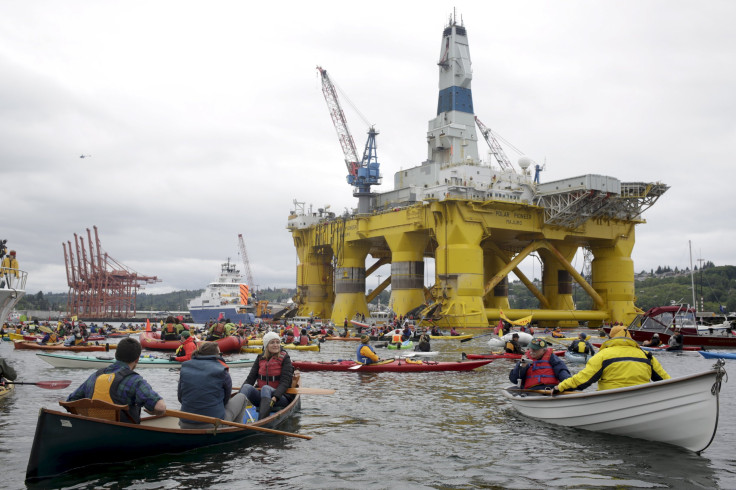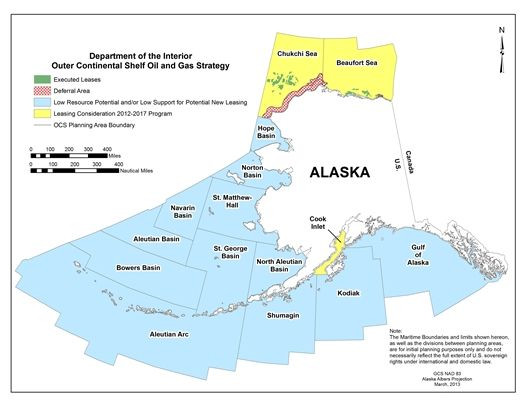Arctic Drilling 2015: Royal Dutch Shell Plc Is Days Away From Drilling For Oil In Alaska's Chukchi Sea

After years of delays and billions of dollars in investment, Royal Dutch Shell Plc (NYSE:RDS.A) is just days away from drilling in Alaska’s Arctic waters. The high-risk, high-cost venture could usher in an oil-and-gas bonanza for Shell if it succeeds -- or stall U.S. Arctic development by decades if it fails.
The Anglo-Dutch energy giant is hauling two massive drilling rigs some 2,000 miles to Alaska’s far northern Chukchi Sea where it plans to start work the third week of July, the Wall Street Journal reported late Tuesday. An entourage of 30 support vessels and seven aircraft are accompanying the rigs: the Polar Pioneer and the Noble Discoverer.

The journey into the Arctic Ocean comes three years after a series of accidents and operational problems forced Shell to postpone the project. One of the company’s offshore oil rigs ran aground and had to be towed, and a containment dome designed to cap runaway wells failed a crucial test.
The debacle prompted the Obama administration in 2013 to halt all drilling activity in the region until the safety and environmental concerns were addressed. In May, the U.S. Interior Department gave Shell conditional approval to resume drilling in Arctic waters, so long as it complies with federal restrictions and oversight.
Shell executives said this time around, both costs and safety are under control although the Chukchi Sea project has already experienced problems. Shell said Tuesday it found a small breach in the hull of a vessel carrying equipment for spill response. And the U.S. Fish and Wildlife Service decided last week that Shell can’t drill two wells simultaneously within a 15-mile radius -- a measure meant to protect walruses that could delay the pace of Shell’s drilling plans.
Despite the costly hurdles, analysts say Shell’s Alaskan venture could pay off: Alaska’s slice of the Chukchi Sea holds the equivalent of 29 billion barrels of oil and gas -- more than twice the global reserves Shell can currently pump at a profit, the Journal noted.
If the multibillion-dollar project fails, however, “I think the U.S. is another 25 years” away from developing Arctic resources, Ann Pickard, an executive vice president who runs Shell’s Arctic division, told the Journal. “Everybody’s watching to see if we’re going to fail or succeed out there.”
© Copyright IBTimes 2025. All rights reserved.



















